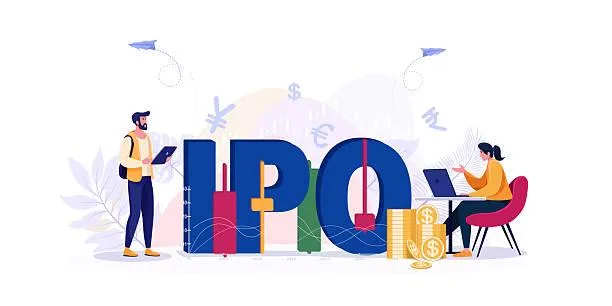What is an IPO and How Does It Work? A Beginner’s Guide by NAGA Experts
IPOs are back in the conversation, and the pipeline is getting busier. This short guide from NAGA breaks down what an IPO really means, points out a few companies worth watching, and outlines the basic signals to look for as listing day approaches. It is a quick snapshot for traders who want to stay ahead of the headlines.
What an IPO is
An initial public offering (IPO) is when a private company sells its shares to the public for the first time and becomes listed on a stock exchange. This allows the company to raise money to grow, while early investors finally get a chance to sell part of their holdings. Once trading begins, the market decides the share price based on supply and demand.
How the Price Is Set Before Trading
Before an IPO goes live, the company works closely with investment banks. These banks help set a price range for the shares, talk to potential investors, and gather demand during what’s called a roadshow.
A final price is usually decided the night before trading begins, based on how much demand there is. On the first trading day, prices can move up or down quickly as supply and demand find balance. It is common to see early price swings.
A few factors can influence this:
- Lock-ups: Some shareholders (like employees and founders) cannot sell their shares for a set time after the IPO. Once those restrictions end, more shares may hit the market.
- News and media coverage: Headlines, analyst opinions, and earnings expectations can all affect investor interest.
- Index inclusion: If the stock gets added to a major index, investment funds may start buying it.
What Happens Behind the Scenes
Getting ready for an IPO takes months. The company must prepare audited financial statements, set corporate governance policies, and meet regulatory requirements. During the roadshow, banks meet with large institutions to measure interest and build what’s called a book of orders.
Most IPOs also include a greenshoe option, which lets banks buy or sell extra shares after the stock starts trading. This helps reduce volatility in the early days.
Another important detail is the type of shares being offered:
- Primary shares: New shares issued by the company to raise money.
- Secondary shares: Existing shares sold by early investors or insiders.
This mix matters because it affects how much ownership the company gives up, how many shares will trade freely, and how the stock might behave after the IPO.
NAGA also offers real stock investing. From Netflix and Apple to NVIDIA and Tesla, you can own a stake in some of the world’s most innovative companies directly through the NAGA account. With access to real shares from markets like the USA, Germany, Spain, France, UAE, and Saudi Arabia, users can invest in global leaders today and build portfolios on their terms.
Interesting Upcoming IPOs to Watch
You can also keep an eye on some exciting upcoming IPOs. As market conditions stabilize and investor interest picks back up, several high-profile companies are preparing to list. Here are some IPOs traders are watching closely as we move into the final quarter of 2025 and beyond:
- Zelis Healthcare
Zelis, a U.S. healthtech payments company, is preparing an IPO in early 2026. The company has filed confidentially and has brought on Goldman Sachs and JPMorgan as lead underwriters. Zelis handles claims and payment workflows across large payer networks, making it a strong candidate for investor attention.
- Canva
Canva is another major name that has long been floated in IPO speculation. The company has used employee share sales and tender offers to provide liquidity while delaying a full public listing. Its valuation recently climbed to about $42 billion, reflecting strong demand from both internal and external investors.
IPO watchers expect Canva to make a move around 2025 or 2026, though the company remains cautious about timing.
- Stripe
Stripe remains privately held, with no official IPO date announced. The company recently conducted a tender offer that valued it at around $91.5 billion, suggesting strong internal confidence.
There is speculation around how Stripe might go public – some believe it could use a direct listing rather than a traditional IPO. For now, though, Stripe continues to build its business privately, citing no immediate need to tap public markets.
Canva website opened on laptop
Source: https://unsplash.com/photos/a-laptop-computer-sitting-on-top-of-a-wooden-table-eD1E6Rqyeag
- Holtec International
Holtec, a major player in nuclear energy, is aiming to file for an IPO in 2026, planning to float about 20% of its equity. Its projects include decommissioning legacy plants and scaling “small modular reactors” (SMRs) globally. This IPO could draw significant interest from infrastructure, energy, and clean tech investors.
A Clearer Way to Follow IPO Listings
Following filings, price ranges, and expected pricing dates is easier when everything sits in one place. Latest market updates inside platforms such as NAGA help you line up key dates alongside news and filings.
An IPO marks a transition to public reporting rather than an end point. Typical areas of attention include what is being offered, who the expected buyers are, and when additional shares could enter the market; subsequent quarters then provide clearer operating data.



